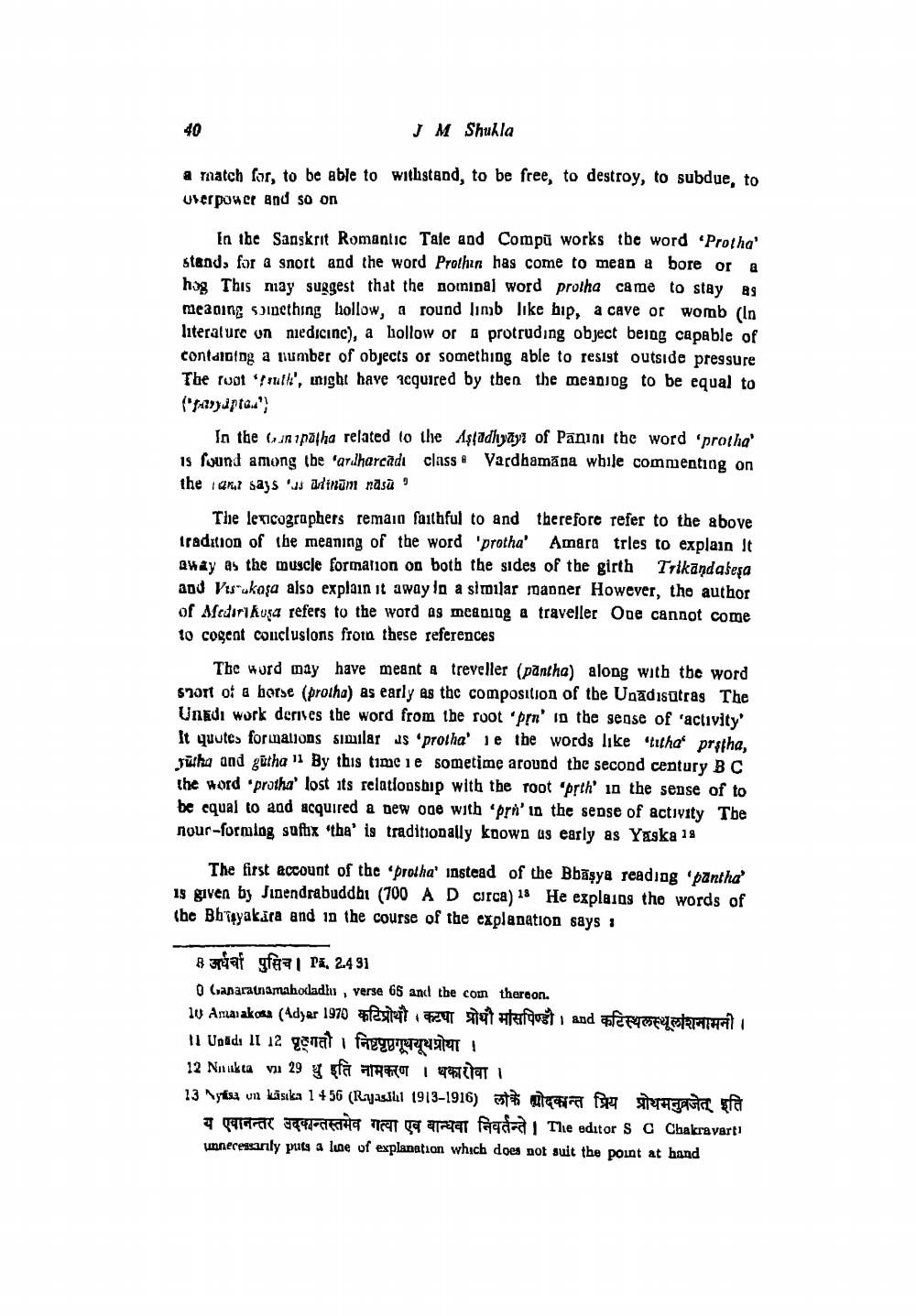________________
40
JM Shukla
a match for, to be able to withstand, to be free, to destroy, to subdue, to user power and so on
In the Sanskrit Romantic Tale and Compü works the word 'Protha' stands for a snort and the word Prothın has come to mean a bore or a hog This may suggest that the nominal word prolha came to stay AS meaning sunething lollow, a round linb like hip, a cave or womb (In literature un niedicinc), a hollow or a protruding object being capable of containing a number of objects or something able to resist outside pressure The root sutte', might have acquired by then the meaning to be equal to (paripta.")
In the (unipalha related to the Aşladhyayı of Panini the word 'protha' is found among the 'ar harcadi classe Vardhamana while commenting on the aml says 's andinām näsa
The lexicographers remain faithful to and therefore refer to the above tradition of the meaning of the word 'protha' Amara tries to explain it away as the muscle formation on both the sides of the girth Trikānda sesa and Vukasa also explain it awaylo a similar manner However, the author of Medirikuga refers to the word as meaning a traveller One cannot come to cogent conclusions from these references
The word may have meant & treveller (pantha) along with the word short of a horse (prolha) as early as the composition of the Unadisutrag The Unadi work derives the word from the root 'prn' in the sense of activity It quutes formalions similar us "protha' ie the words like that prstha, Füha and gutha 11 By this time ie sometime around the second century BC the word protha' lost its relationship with the root 'prth' in the sense of to be equal to and acquired a new one with pri' in the sense of activity Tbe nour-forming saftix 'tha' is traditionally koowo us early as Yaska 19
The first account of the prolha' instead of the Bbāşya reading "pantha' 15 given by Jinendrabuddhi (700 AD curca) 18 He explains the words of (be Bhayakara and in the course of the explanation says:
8 af gaz | Pi, 24 31 O Canaratnamahodadhu , verse 65 and the com theroon. 10 Amaiakosa (Adyar 1970 afegiteit Fin stat ateroost, and afteRITHMETI 11 Unldı 11 12 genat fegy T T ! 12 Nnukta v 29 y gta ar OT i that 13 Nytis un käsika 1 4 56 (R.yasall 1913–1916) * U ma festa seragasta fà
य एवानन्तर उदान्तस्तमेव गत्वा एव बान्धवा निवर्तन्ते | The editorsC Chakravarti unnecessarily puts a lue of explanation which does not suit the point at hand




